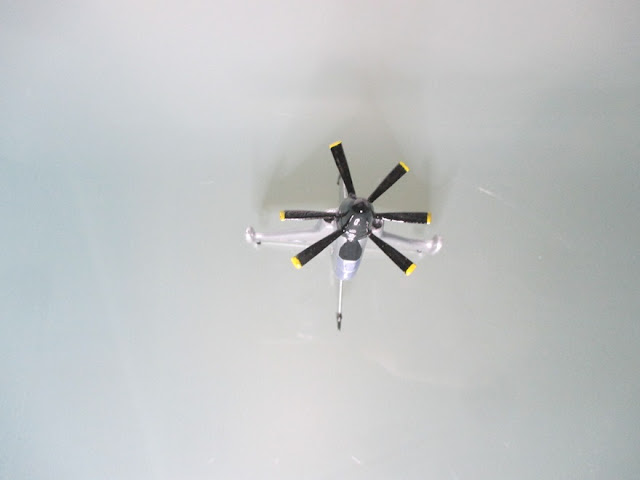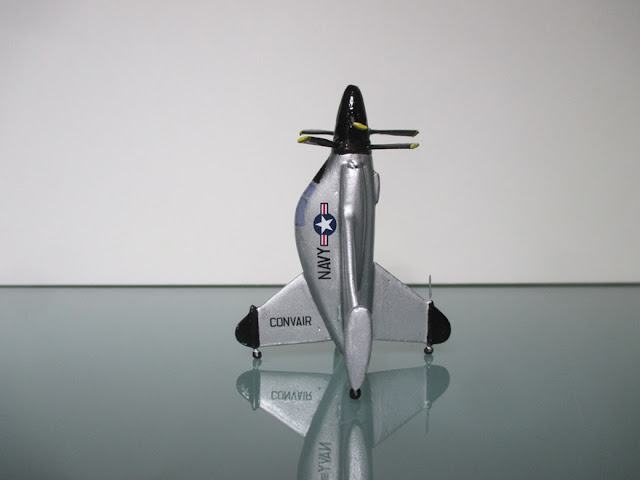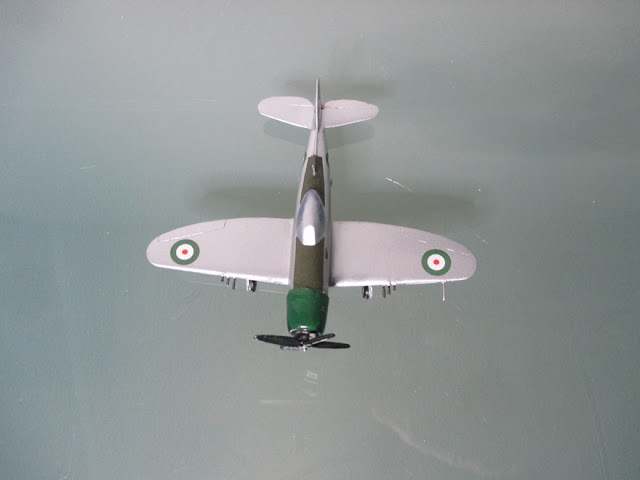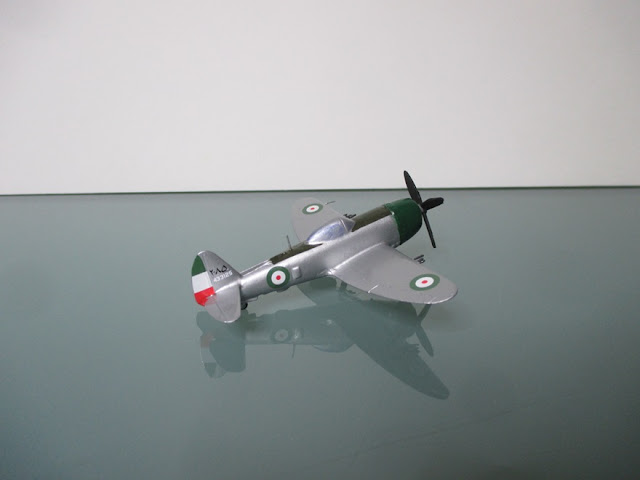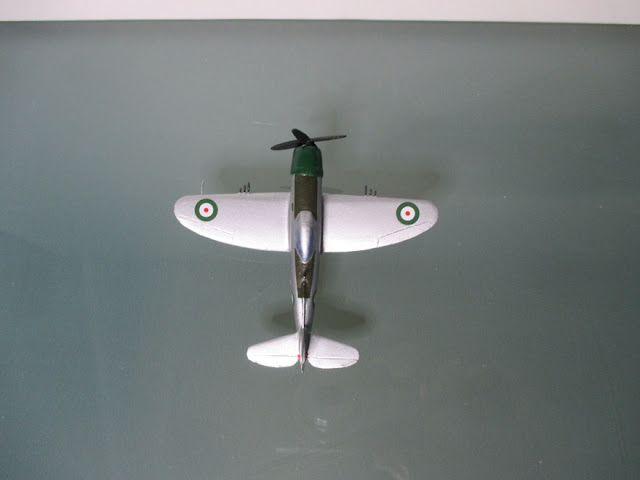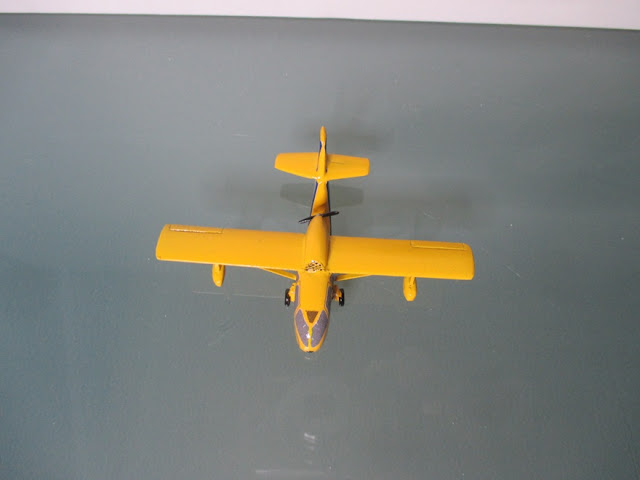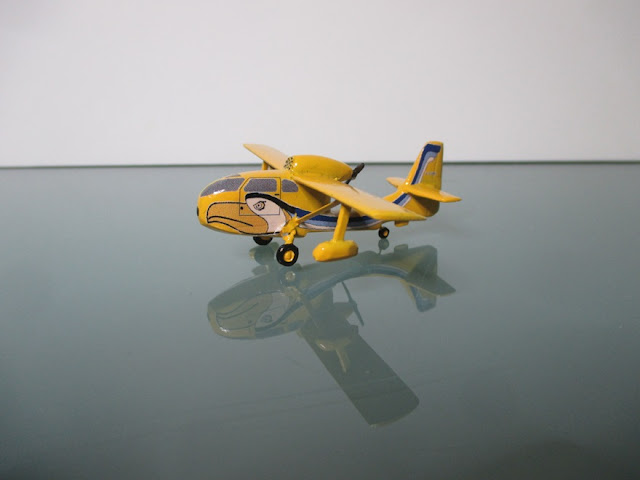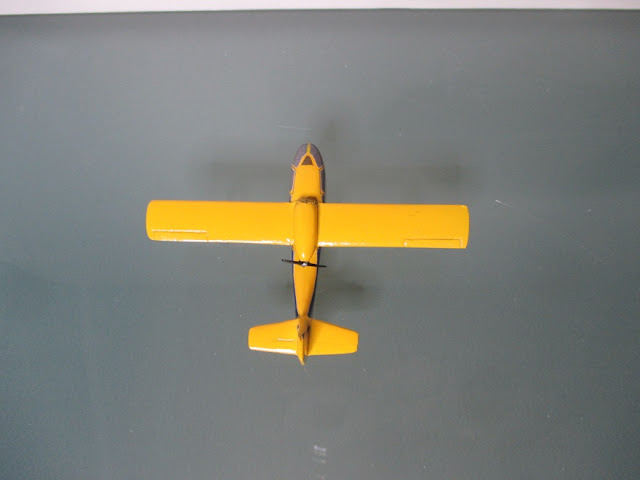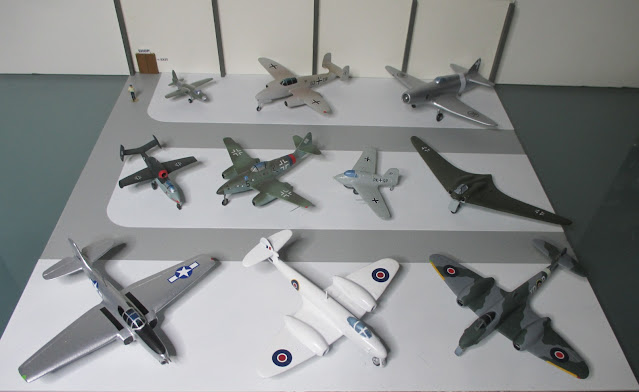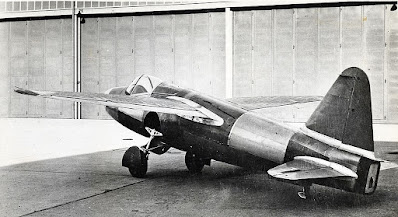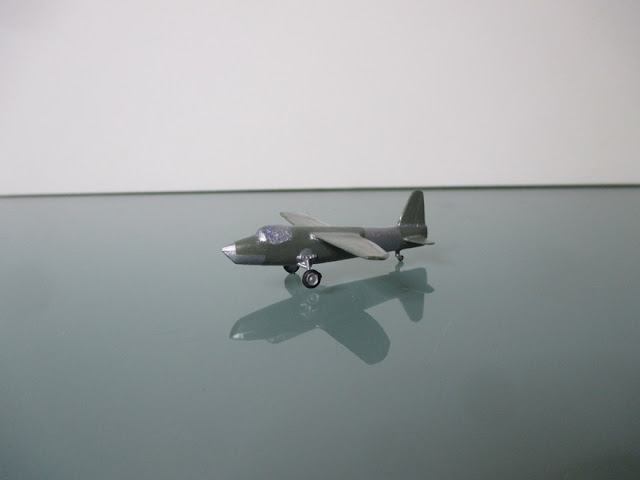Le "Pogo", nom d'un "baton sauteur" appelé en réalité "échasse de saut à ressort", a été créé par les allemands Max Pohlig et Ernst Gottschall en mars 1920....
The "Pogo", name of a "pooping stick" actually called a "spring jumping stilt", was created by the Germans Max Pohlig and Ernst Gottschall in March 1920....
Ce nom a été repris dans les années 1970 pour qualifier une danse du chanteur Sid Vicious des Sex Pistols où il sautait de bas en haut frénétiquement...
Mais auparavant, au début des années 50, la Société Convair a étudié la demande de l'US Navy d'un chasseur embarqué pouvant décoller d'un navire de petites dimensions et s'y poser pour assurer la protection des flottes et des convois de ravitaillement sans avoir besoin de porte-avions.
La Société Convair a proposé un avion avec des ailes delta et un empennage de grande taille, la dérive étant située en dessous du fuselage, qui repose au sol sur quatre jambes télescopiques pourvues de petites roulettes, qui évoquent les bâtons sauteurs à ressort (les Pogo sticks) utilisés par les enfants américains et qui donnent son surnom à l'appareil.
Après plus de 280 décollages sous entrave (avec une élingue fixée dans le nez) dans un hangar à dirigeable pour éviter les problèmes de vents, le XFY-1 effectua son premier décollage et son premier atterrissage verticaux le 1er août 1954, puis le premier passage en vol horizontal en novembre 1954.
This name was used in the 1970s to describe a dance by singer Sid Vicious of the Sex Pistols where he jumped up and down frantically...
But before that, in the early 1950s, the Convair Company studied the US Navy's request for a shipborne fighter capable of taking off from and landing on a small ship to protect fleets and supply convoys without the need for an aircraft carrier.
The Convair Company proposed an aircraft with delta wings and a large empennage, the fin being located below the fuselage, which rests on the ground on four telescopic legs provided with small casters, which evoke spring-loaded jumping sticks (Pogo sticks) used by American children and which give the device its nickname.
After more than 280 takeoffs under restraint (with a sling fixed in the nose) in an airship hangar to avoid wind problems, the XFY-1 made its first vertical takeoff and landing on August 1, 1954, then the first pass in horizontal flight in November 1954.
Malgré un siège éjectable pivotant à 45° lors des positions verticale (décollage et atterrissage) et horizontale (en vol), l'atterrissage était un sérieux problème car le pilote devait regarder derrière lui pour stabiliser l'engin, mais surtout l'avion ne pouvait que difficilement passer de la position horizontale à la verticale pour le poser après s'être déplacé à grande vitesse...
Ces manœuvres étaient donc réservées à d'excellents pilotes pour atterrir en conditions réelles avec le vent du large, le roulis et le tangage, mais surtout l'appareil était subsonique avec des performances moindres ou égales aux avions de chasse à réaction, ce qui a amené l'US Navy à mettre fin au projet.
Le modèle présenté ici provient d'un kit en résine de Terry Patrick que j'ai coulé en métal, puis monté (en fabriquant notamment les trains d'atterrissage, les hélices etc non fournis dans le kit) et décoré aux couleurs du seul prototype en configuration de vol.
Despite an ejection seat pivoting 45° during vertical (takeoff and landing) and horizontal (in-flight) positions, landing was a serious problem because the pilot had to look behind him to stabilize the machine, but above all the plane did not could hardly move from the horizontal position to the vertical to put it down after moving at high speed...
These maneuvers were therefore reserved for excellent pilots to land in real conditions with offshore wind, roll and pitch, but above all the aircraft was subsonic with performance less than or equal to jet fighter planes, which led the US Navy to terminate the project.
The model shown here comes from a resin kit by Terry Patrick that I cast in metal, then assembled (in particular by making the landing gear, propellers etc not supplied in the kit) and decorated in the colours of the only prototype in flight configuration.
1/144 Convair XFY-1 "¨Pogo" - US Navy prototype
And a little staging, with a scratch ladder?



